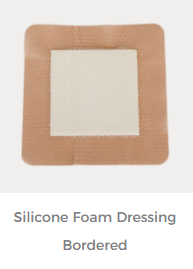Tissue fluid is an indispensable component in the wound-healing process, but excessive tissue fluid leakage may hinder wound healing. So, when does the wound stop exuding tissue fluid?
What is wound exudate?
Generally, exudate will appear after a wound is injured, is light yellow in color, and plays a role in closing the wound (it will also occur in large wounds, which will appear as fluid exudation). This is a stage of wound healing, called the inflammatory reaction period. These dead and injured substances will eventually be excreted from the body in the form of fluid exudation and gather around the wound. The yellow exudate we see will be considered by the body as foreign matter, so it will Drain them.
What are the functions of exudate?
This exudate protects the wound, insulating it from the outside world and preventing further invasion of new bacteria. On the other hand, exudate also contains many factors that promote wound healing. While keeping the wound moist, it can also promote wound healing.
When does the oozing stop?
This depends on the condition of the wound, usually ranging from a few hours to a few days. The lighter the wound, the less exudate, and conversely, the exudate increases. What also needs to be considered is the cause of the injury. Depending on the cause of the injury, the wound response will be very different. The healing process is like building a damaged city wall. The damaged skin will be repaired bit by bit until it heals! This stage usually lasts from a few hours to a few days, depending on the size and depth of the wound.
Over time, new cells begin to grow in the wound, forming granulation tissue. During this process, the amount of tissue fluid leakage gradually decreases. When the granulation tissue matures and forms a new skin barrier, the leakage of tissue fluid basically stops. This stage usually takes from weeks to months, again depending on the size and depth of the wound.
It should be noted that certain factors may affect the timing and amount of interstitial fluid leakage. For example, tissue fluid leakage may increase under conditions such as infection, inflammation, or malnutrition. In these cases, wound healing may be delayed, requiring additional treatment and care.
Therefore, to determine when a wound stops exuding tissue fluid, it is necessary to comprehensively consider the healing status of the wound, individual differences, and whether there are factors that affect healing. For ordinary people, if they find that a wound continues to exude a large amount of tissue fluid or other abnormal symptoms occur, they should seek medical advice and treatment in time.
The time it takes for a wound to stop exuding tissue fluid varies from individual to individual and needs to be judged based on the specific circumstances. If you have any concerns or questions about wound healing, it is recommended that you consult a professional doctor or seek medical help promptly.
For more information on customized®Silicone Foam Dressing, refer to the previous articles. If you have needs, you are welcome to contact us; we will serve you wholeheartedly.
At Longterm Medical, we transform this data by innovating and developing products that make life easier for those who need loving care.
Editor: kiki Jia
Date: December 27, 2023

 English
English عربى
عربى Español
Español русский
русский 中文简体
中文简体








